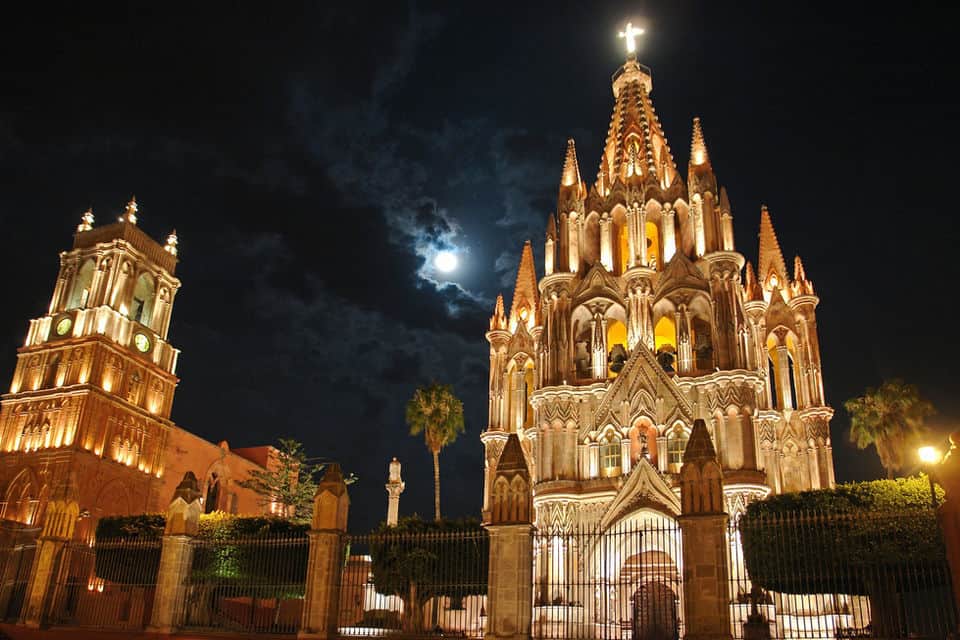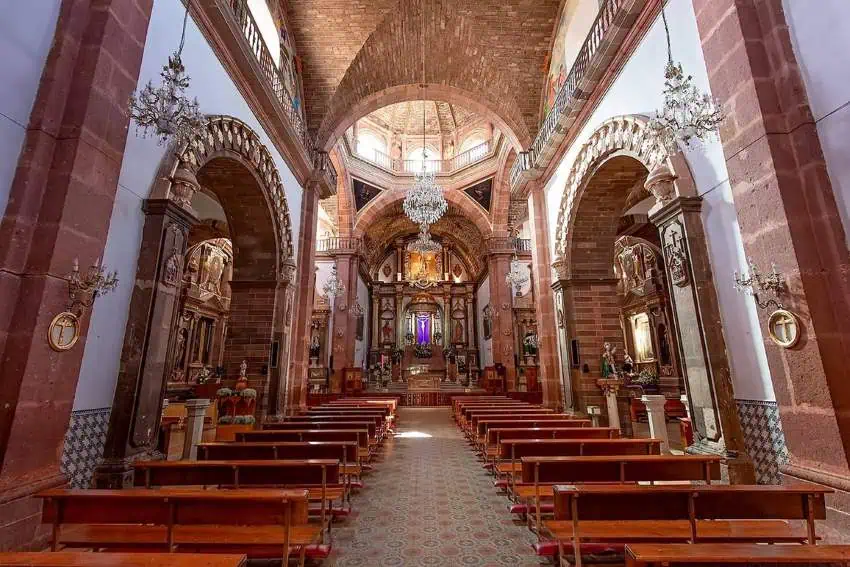Almost anywhere in the Guwanjuado city of San Miwal de Alende, your eyes are pulled to the Miwal Arcang, which is simply called La Parokvia.
In the daytime, the sunlight was glowing in the day and the artistic burned at night, and the towers are its best mark on the city of Barokvia. With its pink spears and gothic-scraped shade, the building is impossible to ignore and is difficult to classify. Its architectural style exceeds the easy labels because the church is not built in the same era. It has been strengthened, expanded and redesigned for centuries.
A normal start to the growing village
The first Parish church in San Miguel was built shortly after the city was founded by Franciscan Fries in 1542. It was a simple structure, and that was sufficient for small settlement at the time. Once the population grew, the need for a great place of worship became clear. In 1578, the church was completely renovated to serve the expanding community.
Over time, the structure began to deteriorate, and by 1690, city leaders had formally petitioned Viceroy. They argued that although the local decimals were permanently allocated for the maintenance of the building, the funds could be misfigured by the church authorities.
Viceroy agreed to investigate and sent a rated Mexico city architect Marco Antonio Choprarias to assess the damage. He decided that the church was unsafe and to shut down to prevent any tragedy, and he added the new foundations, a complete reconstruction with a large floor plan, and added the transptums to deliver it luxurious. In 1698, Valladolite officially ordered the reconstruction of the church and contributed 1,000 pesos to start things.
Choprariaz designed a Latin cross layout and two -sided churches updating in a casual baroque style, one was dedicated to Chinese de La Concista (Lord of Success) and the other to Virgen de Los Dolorus (our Lady of Soros). He built the main Neva with semi -circular curves, and then made it possible to convert those areas into churches for Virgen Dell Carmen and Virgen Dell Rosario.

Choprarias worked for about two years, and in 1692, Viceroy reported that the building was almost finished, but some more costs needed. Despite repeated demands, he has never received the entire year salary of 1,460 Pesos, which he promised to be.
Choprarias eventually returned to Mexico, where he was assigned to work in the Metropolitan Cathedral and Royal Palace. Architect Juan Antonio de Gusman later appointed to complete the rehabilitation of a low salary, brought to conclude the project in 1709.
18th century improvements and 19th century crisis
In 1740, the second tower was added to Barokwia to provide the expected visual symmetry at the right colonial church. This in addition reflected the growing importance of San Miguel and the desire to create a very dignified worship.
Throughout the 18th century, the interior was gradually enriched to match this high exterior. As the taste is created and the resources are allowed, the baroque altar, religious paintings and decorated devotional artwork have been added over time.

However, in the late 1800s, Barokvia was again in crisis. The western tower became very unstable, its beads had to be removed, and a large cracks ran from the cire -box above the main entrance to the facade. Although the temporary repairs were standing for a while, it became clear that a major intervention was necessary.
New-hollow shift
The priest of the Church, Jose Maria de Jessus Dengunos and Dwalos were created for bold Shoke: he hired local stones for the project project. Gutres does not have a proper architectural train, but welcomes the hostility and hostility to craftsmanship.
Between 1880 and 1890, Cutters led the change, and was inspired from the postcards of European cathedrals. Rising towers, indicated curves, Bunals And complex stone sculptures. The stone used in the facade was in the pink color Quarry The quarry was made from the slopes of the nearest Palo Hooorbano volcano, which is not only providing a unique color, but also located near the large scale plan.
Before the new facade work began, Cutters focused on strengthening the existing structure. The original side towers were removed because they are very unstable to stand up. He strengthened the main walls of the church and addressed the basement issues.
Inside, the church took a new character and introduced neoclassical elements. Original wood altaries, clothes were damaged, were replaced by elegantly carved stone altar made by the same local Quarry. These updates brought a sense of visual reconciliation between the interior and the outside, and ensured that the building could support the weight of the new design.
It is unusual to not only what this great reconstruction has achieved, but also how it was done. This is not just the vision of Cutrez; It was only the people of San Miguel’s people made it possible. The women and the children carried the sacks of sand and small stones, while men loaded boulders, loaded with carts and wheelchairs and took them from Rio Laja to the construction site.
At the time, the city people called it, the ant’s work. Work for many years without pay, which is the effort of the united community that is being operated by devotion. They were building a temple that worthy of their faith.
Than the postcard-sarcastic church
Despite the great appearance, Barokvia has always been a parish church. San Miguel de Allende is not a bishop’s seat, so its main church has never been cathedral. It is one of the most photographed tourist attractions in Mexico, serving the local community as a place of worship and religious celebrations. Guests are welcome to enter, although it is asked to limit visits during the mass, it takes place several times a day.
Its esplenate and from the park, today called El Jardon, which are sSpiritual Vellenses’ Favorite collection space. This is where local and tourists enjoy the street meal, singing with their trade on the weekends, and taking pictures of life more than life Paper Mach Mojikangas And attend in major events.
Throughout the complex history of San Miguel de Alende, Barokvia has always been in its heart, and San Miguel residents have been skeptical and deeply desired.
Sandra Kans Kahan San is a Mexican writer and translator, a base -based site, and he is a specialist in mental health and humanitarian aid. She believes in the power of language to promote compassion and understanding in cultures. Can access her (Email protected)








